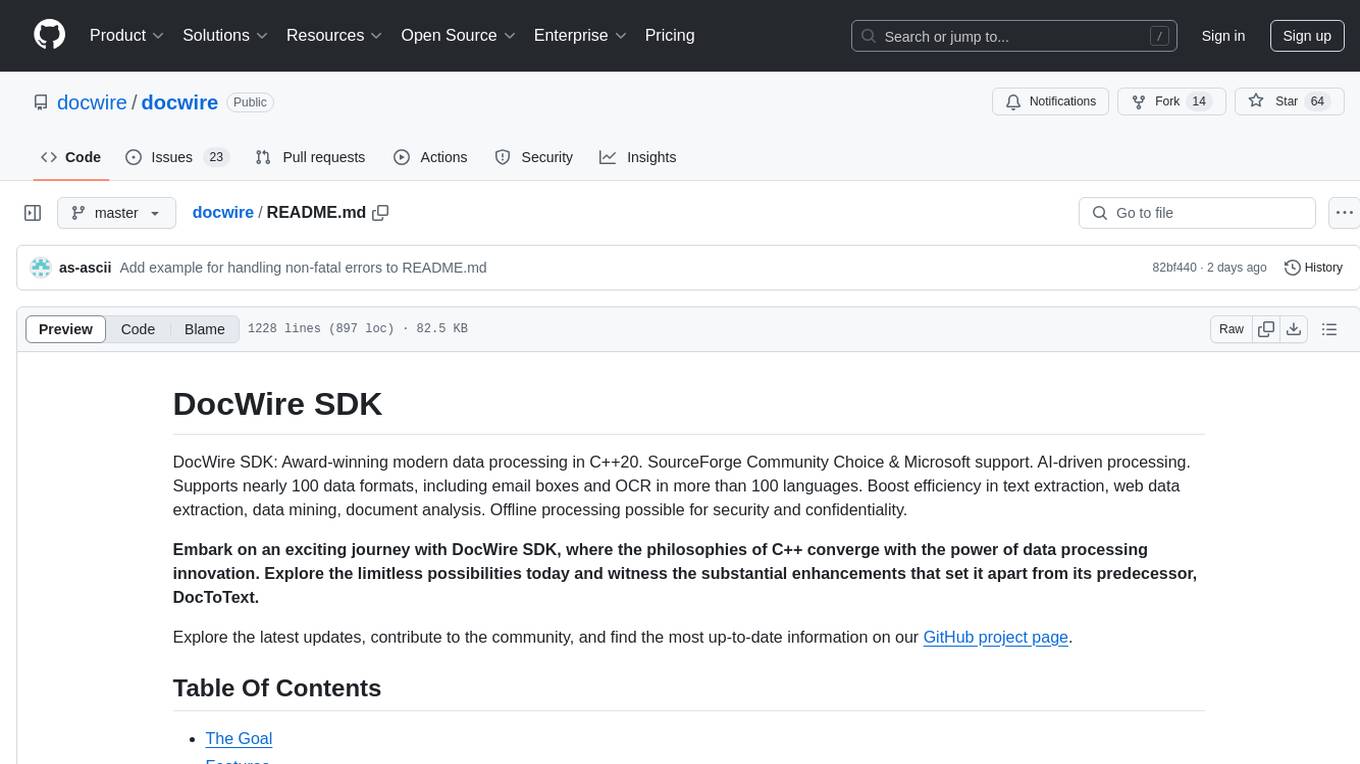
Equivariant-Encryption-for-AI
Trade costly on-prem AI for the first blind API.
Stars: 210
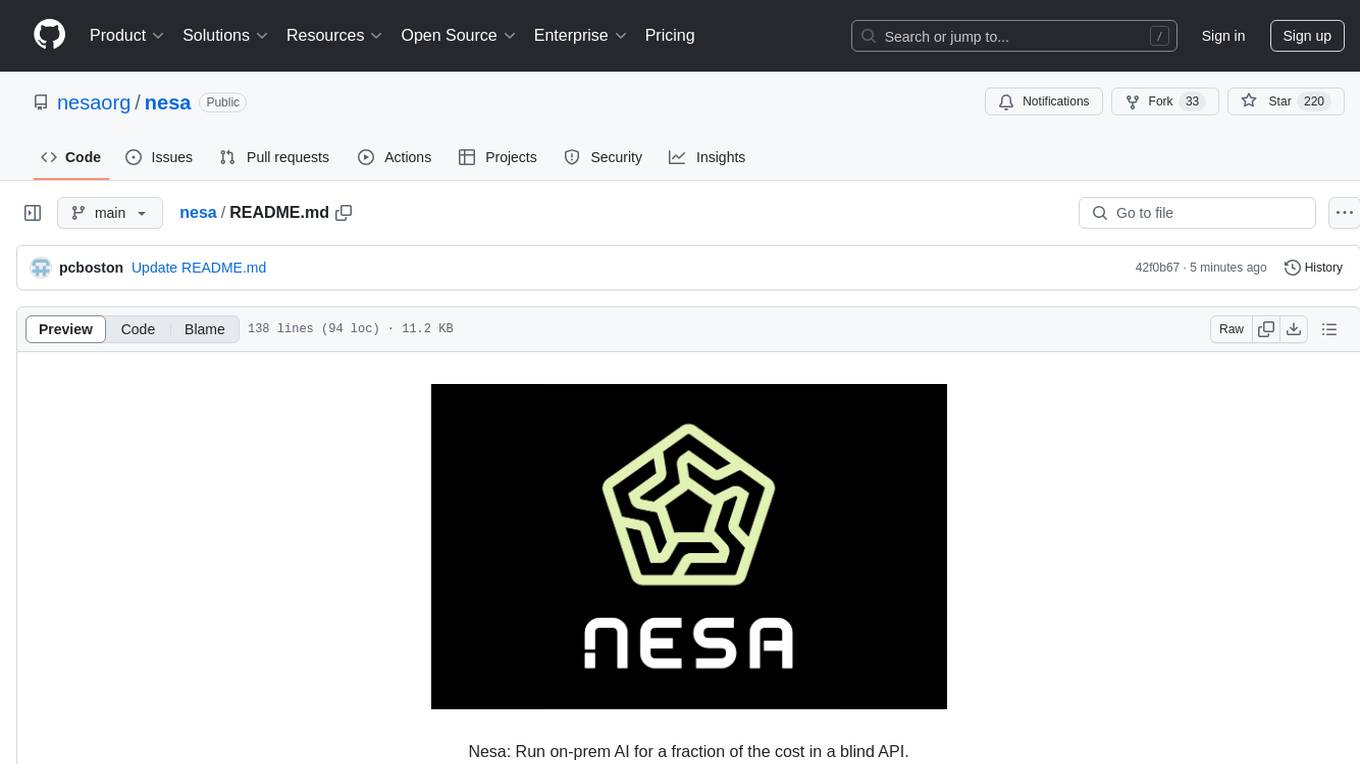
At Nesa, privacy is a critical objective. Equivariant Encryption (EE) is a solution developed to perform inference on neural networks without exposing input and output data. EE integrates specialized transformations for neural networks, maintaining data privacy while ensuring inference operates correctly on encrypted inputs. It provides the same latency as plaintext inference with no slowdowns and offers strong security guarantees. EE avoids the computational costs of traditional Homomorphic Encryption (HE) by preserving non-linear neural functions. The tool is designed for modern neural architectures, ensuring accuracy, scalability, and compatibility with existing pipelines.
README:
At Nesa, privacy is a critical objective. On our path toward decentralized AI, we confronted a key challenge: how can we perform inference on neural networks without exposing the underlying input and output data to external parties? Traditional approaches, such as differential privacy or homomorphic encryption (HE), while conceptually strong, fall short in practical deployments for complex neural architectures. These methods can struggle to handle non-linear operations efficiently, often imposing substantial computational overhead that makes them challenging to integrate into real-time or large-scale systems.
A snapshot of Equivariant Encryption's properties versus homomorphic encryption:
| Feature | Equivariant Encryption (EE) | Homomorphic Encryption (HE) |
|---|---|---|
| Latency Overhead | None (0) | Very High |
| Non-Linear Operations | Handles Exact | Approximation Needed |
| User Key Control | Direct & Custom | Schema-Defined |
| Cryptographic Hardness | Massive Combinatorial Complexity | Standard Hardness Assumptions |
Zero overhead: EE provides the same latency as plaintext inference, with no slowdowns.
128k factorial: EE indicates a massive combinatorial complexity, contributing to the strongest security guarantees.
We investigated multiple methodologies to ensure end-to-end data privacy within the Nesa network. Differential privacy seeks to obscure sensitive details by adding statistical noise, but it cannot fully prevent inference on raw data once it is processed by a model. Homomorphic encryption, on the other hand, is mathematically elegant: it permits computations directly on encrypted data. This is achieved through operations that are homomorphic to addition and multiplication, enabling algebraic manipulation of ciphertexts that, once decrypted, yield the correct plaintext results. Such a property is exceptionally appealing in scenarios like outsourced cloud computations, where one can perform inference off-site without revealing the sensitive inputs.
However, standard HE schemes are tailored around arithmetic operations. Neural networks, especially those with layers like attention mechanisms, activation functions, or normalization steps, do not map cleanly onto ring or field operations alone. Adapting HE to these complex transformations typically incurs prohibitive computational costs, slowing inference to impractical speeds.
Despite this, the conceptual promise of HE—running inference on encrypted data without decryption—prompted us to seek an alternative. We aimed to preserve the protective qualities of encrypted computation while working around the bottlenecks introduced by non-linear neural functions.
Our solution is Equivariant Encryption (EE). The term equivariance signifies a change in representation that preserves the operational structure from the model’s perspective. In other words, we transform the input data into an encrypted domain where the neural network’s computations can be carried out as though it were processing plaintext, all while maintaining the secrecy of the underlying information.
Rather than relying exclusively on arithmetic operations compatible with HE, EE integrates specialized transformations designed around the internal properties of neural networks. We exploit the known architecture, layer composition, and input-output mappings of the model to construct a system in which each step of inference operates correctly on encrypted inputs. This approach avoids expensive retraining on encrypted datasets. Instead, by following a set of mathematical guidelines, we can generate a new variant of the model that works with our encryption schema in a matter of seconds.
Formally, given some plaintext $p_i$, and some ciphertext $c_i$, with $p_i$ = decrypt($c_i$), our EE framework ensures that decrypt(nonlinear($c_1,c_2$)) = nonlinear($p_1,p_2$), where "nonlinear" represents a specific set of non-linear neural functions.
Crucially, the complexity of inference under EE does not surpass that of the unencrypted version. Each forward pass through the network involves approximately the same computational cost. Thus, inference latency remains unchanged, a significant advantage compared to conventional HE-based techniques.
To illustrate this with a tangible example, consider transformer-based models like ChatGPT, Claude, or Llama. These models employ tokenizers to convert text into discrete tokens, each mapped to an integer token ID. Under EE, we implement a specialized tokenizer that produces a different, encrypted set of token IDs. The network, now adapted to EE, treats these encrypted token IDs as standard inputs. It processes them identically to how it would process normal tokens, ultimately returning encrypted output tokens that can be decrypted locally by the user. The following diagram outlines this workflow:
In this setup, all data traveling over the network remains encrypted, and the transformations that produce and consume these tokens are carefully chosen to deny any straightforward method for recovering the plaintext. The attacker sees only encrypted tokens and a model variant designed to operate on that encrypted space, providing no direct, low-cost avenue to extract the original information.
Below is a more detailed breakdown of how Equivariant Encryption matches or outperforms the expectations we have from traditional Homomorphic Encryption methods:
| Property | Homomorphic Encryption (HE) | Equivariant Encryption (EE) |
|---|---|---|
| Data Confidentiality (Server Blindness) | The server never sees plaintext data. | The server never sees plaintext data. |
| End-to-End Encrypted Computation | Operations should be fully on encrypted data, with no intermediate decryptions. | EE models run directly on encrypted tokens. No intermediate decryptions are required. |
| User-Controlled Encryption | Users should hold keys and control encryption/decryption. | Only the user can map plaintext to transformed tokens using the EE tokenizer as a private key. |
| Preservation of Accuracy | The decrypted output should match the result of plaintext inference. | EE ensures final results are identical to plaintext inference outputs, with no accuracy loss. |
| Support for Arbitrary Model Structures | HE struggles with non-linearities and complex NN layers. | EE is designed for modern neural architectures and preserves non-linearities. |
| Minimal Performance Overhead | HE incurs large computational overhead. | EE imposes no overhead; inference latency matches that of the underlying model on plaintext data. |
| No Approximation of Functions | HE may require approximations of complex operations. | EE avoids approximations, preserving exact neural network functions post-transformation. |
| Scalability to Large Models | Handling large models under HE is impractical. | EE scales naturally with large models without any computational penalties. |
| Compatibility with Existing Pipelines | HE often requires extensive pipeline modifications. | EE requires a one-time transformation, after which pipelines operate as normal. |
| Clear Security Model & Robustness | HE has strong theoretical foundations. | EE provides a massively complex, secure combinatorial search space, making brute-force attacks impossible. |
We invite the community to examine and test the security claims of our Equivariant Encryption approach. As part of our commitment to transparency and continual refinement, we have organized a contest encouraging participants to probe for weaknesses and demonstrate potential exploits.
For details, please visit: https://github.com/nesaorg/Equivariant-Encryption-for-AI/blob/main/CONTEST.md
For Tasks:
Click tags to check more tools for each tasksFor Jobs:
Alternative AI tools for Equivariant-Encryption-for-AI
Similar Open Source Tools

Equivariant-Encryption-for-AI
At Nesa, privacy is a critical objective. Equivariant Encryption (EE) is a solution developed to perform inference on neural networks without exposing input and output data. EE integrates specialized transformations for neural networks, maintaining data privacy while ensuring inference operates correctly on encrypted inputs. It provides the same latency as plaintext inference with no slowdowns and offers strong security guarantees. EE avoids the computational costs of traditional Homomorphic Encryption (HE) by preserving non-linear neural functions. The tool is designed for modern neural architectures, ensuring accuracy, scalability, and compatibility with existing pipelines.
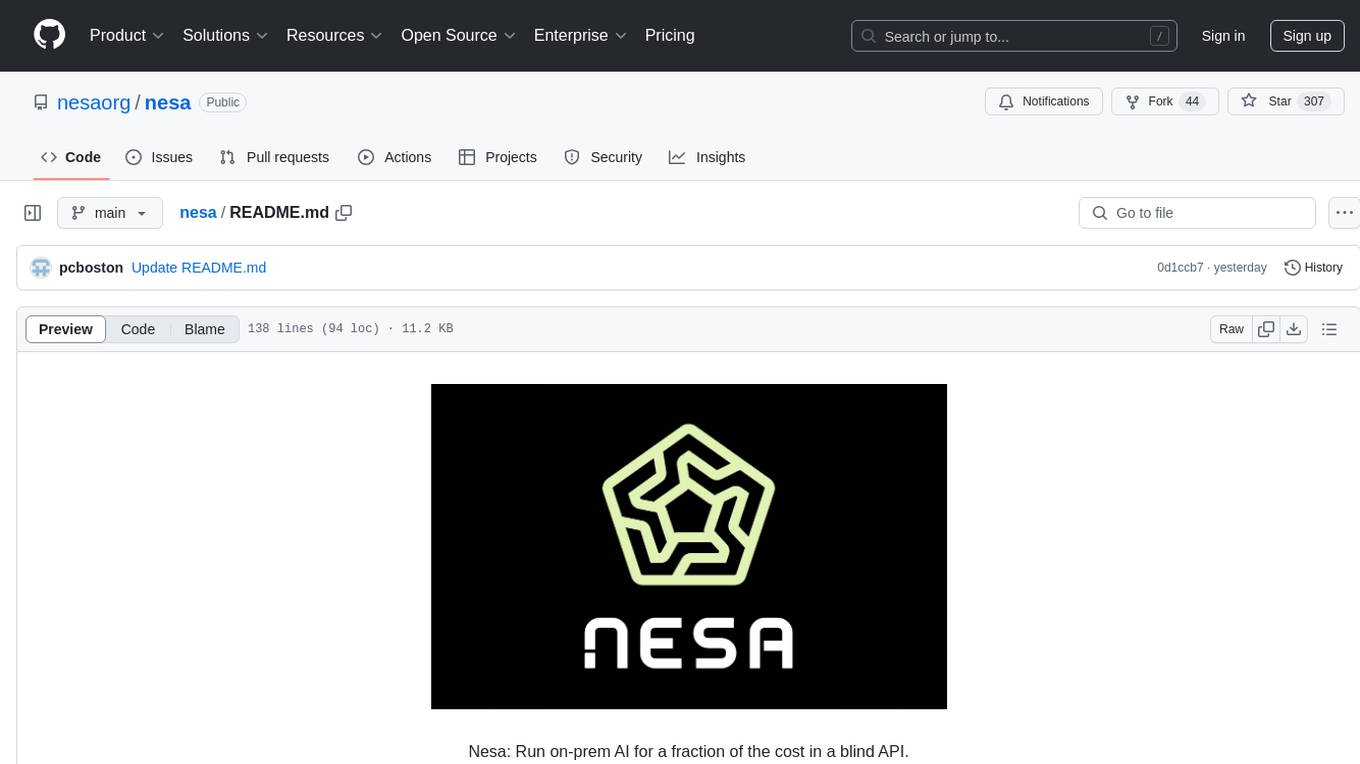
nesa
Nesa is a tool that allows users to run on-prem AI for a fraction of the cost through a blind API. It provides blind privacy, zero latency on protected inference, wide model coverage, cost savings compared to cloud and on-prem AI, RAG support, and ChatGPT compatibility. Nesa achieves blind AI through Equivariant Encryption (EE), a new security technology that provides complete inference encryption with no additional latency. EE allows users to perform inference on neural networks without exposing the underlying data, preserving data privacy and security.
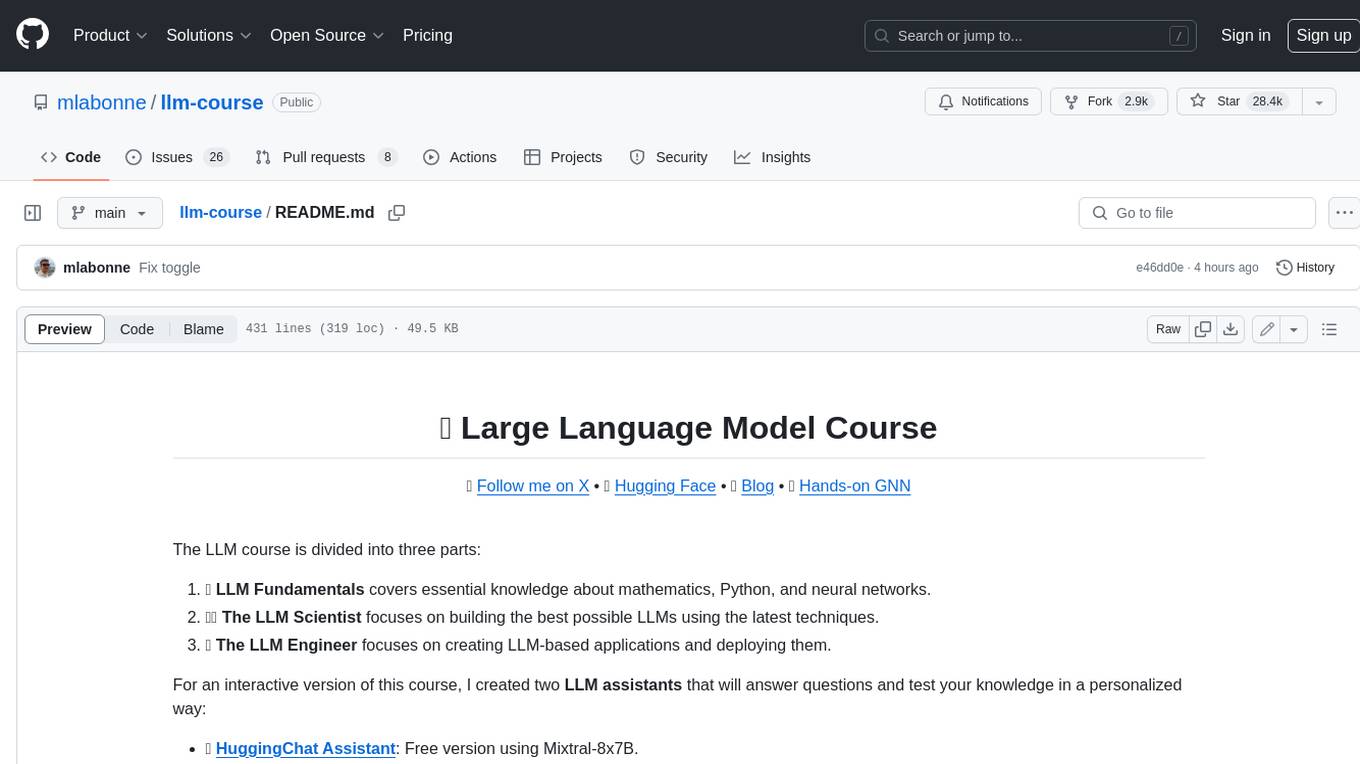
llm-course
The LLM course is divided into three parts: 1. 🧩 **LLM Fundamentals** covers essential knowledge about mathematics, Python, and neural networks. 2. 🧑🔬 **The LLM Scientist** focuses on building the best possible LLMs using the latest techniques. 3. 👷 **The LLM Engineer** focuses on creating LLM-based applications and deploying them. For an interactive version of this course, I created two **LLM assistants** that will answer questions and test your knowledge in a personalized way: * 🤗 **HuggingChat Assistant**: Free version using Mixtral-8x7B. * 🤖 **ChatGPT Assistant**: Requires a premium account. ## 📝 Notebooks A list of notebooks and articles related to large language models. ### Tools | Notebook | Description | Notebook | |----------|-------------|----------| | 🧐 LLM AutoEval | Automatically evaluate your LLMs using RunPod |  | | 🥱 LazyMergekit | Easily merge models using MergeKit in one click. |  | | 🦎 LazyAxolotl | Fine-tune models in the cloud using Axolotl in one click. |  | | ⚡ AutoQuant | Quantize LLMs in GGUF, GPTQ, EXL2, AWQ, and HQQ formats in one click. |  | | 🌳 Model Family Tree | Visualize the family tree of merged models. |  | | 🚀 ZeroSpace | Automatically create a Gradio chat interface using a free ZeroGPU. |  |
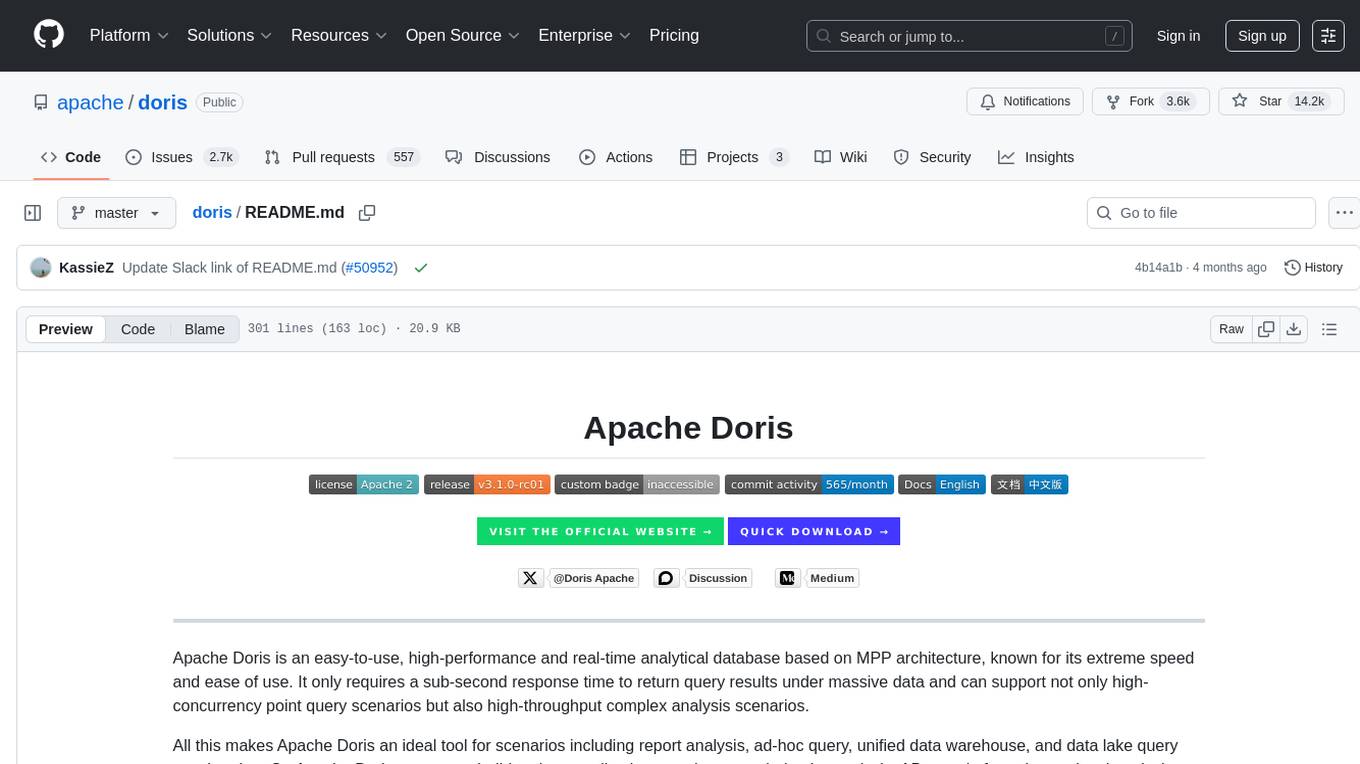
doris
Doris is a lightweight and user-friendly data visualization tool designed for quick and easy exploration of datasets. It provides a simple interface for users to upload their data and generate interactive visualizations without the need for coding. With Doris, users can easily create charts, graphs, and dashboards to analyze and present their data in a visually appealing way. The tool supports various data formats and offers customization options to tailor visualizations to specific needs. Whether you are a data analyst, researcher, or student, Doris simplifies the process of data exploration and presentation.
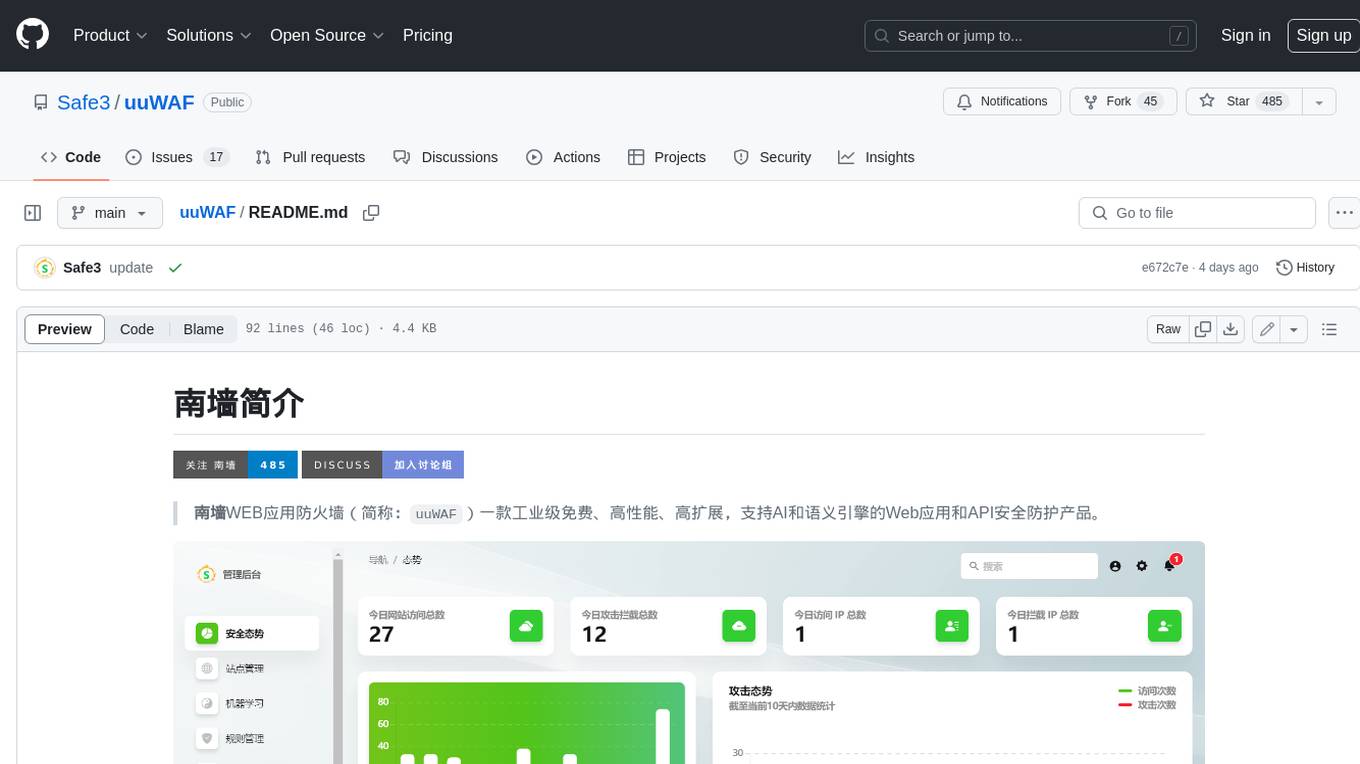
uuWAF
uuWAF is an industrial-grade, free, high-performance, highly extensible web application and API security protection product that supports AI and semantic engines.
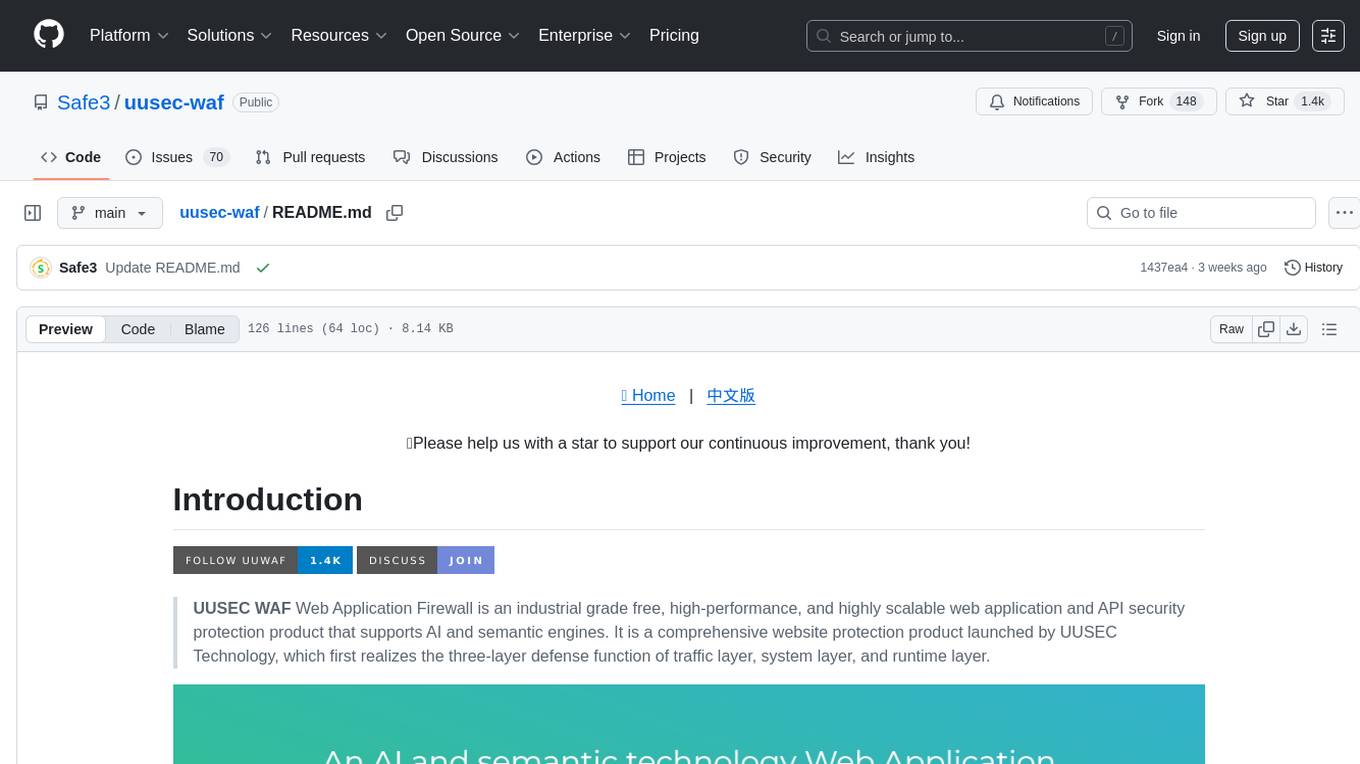
uusec-waf
UUSEC WAF is an industrial grade free, high-performance, and highly scalable web application and API security protection product that supports AI and semantic engines. It provides intelligent 0-day defense, ultimate CDN acceleration, powerful proactive defense, advanced semantic engine, and advanced rule engine. With features like machine learning technology, cache cleaning, dual layer defense, semantic analysis, and Lua script rule writing, UUSEC WAF offers comprehensive website protection with three-layer defense functions at traffic, system, and runtime layers.
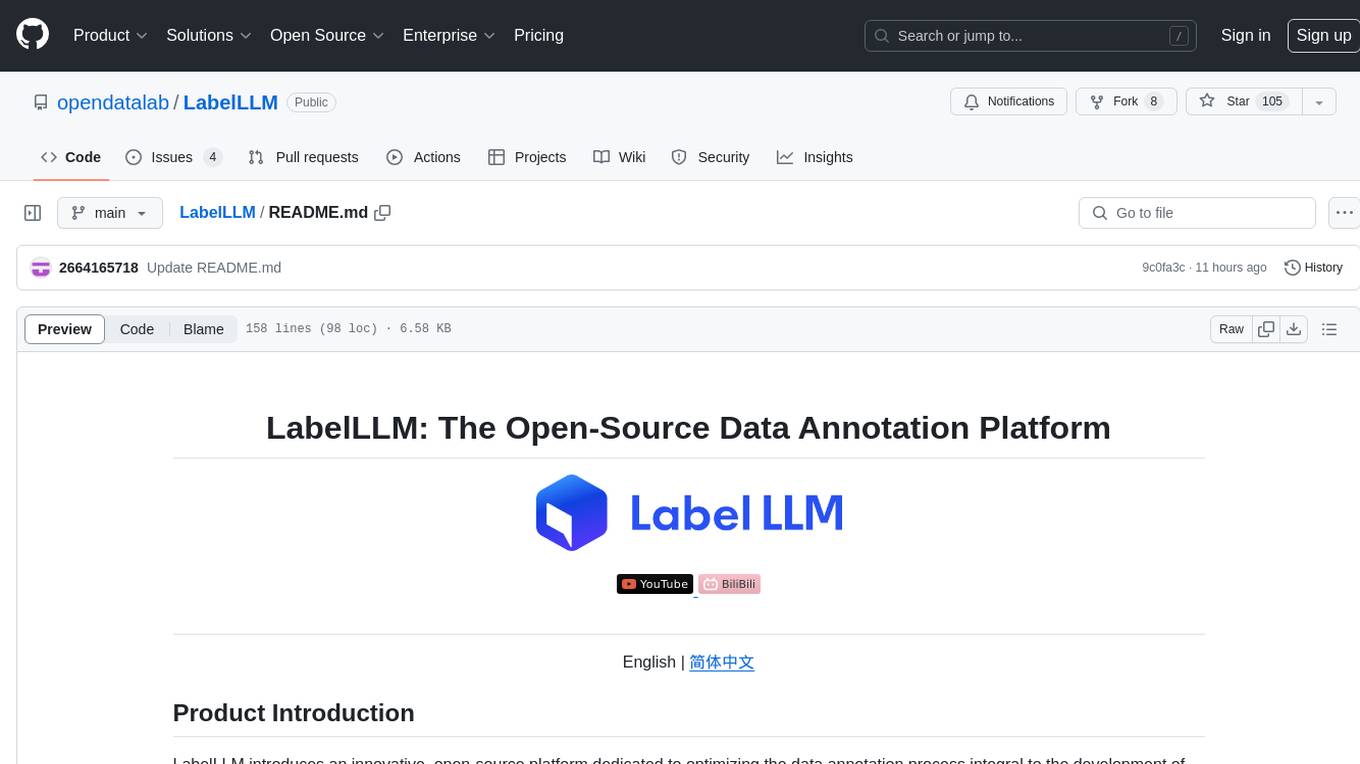
LabelLLM
LabelLLM is an open-source data annotation platform designed to optimize the data annotation process for LLM development. It offers flexible configuration, multimodal data support, comprehensive task management, and AI-assisted annotation. Users can access a suite of annotation tools, enjoy a user-friendly experience, and enhance efficiency. The platform allows real-time monitoring of annotation progress and quality control, ensuring data integrity and timeliness.
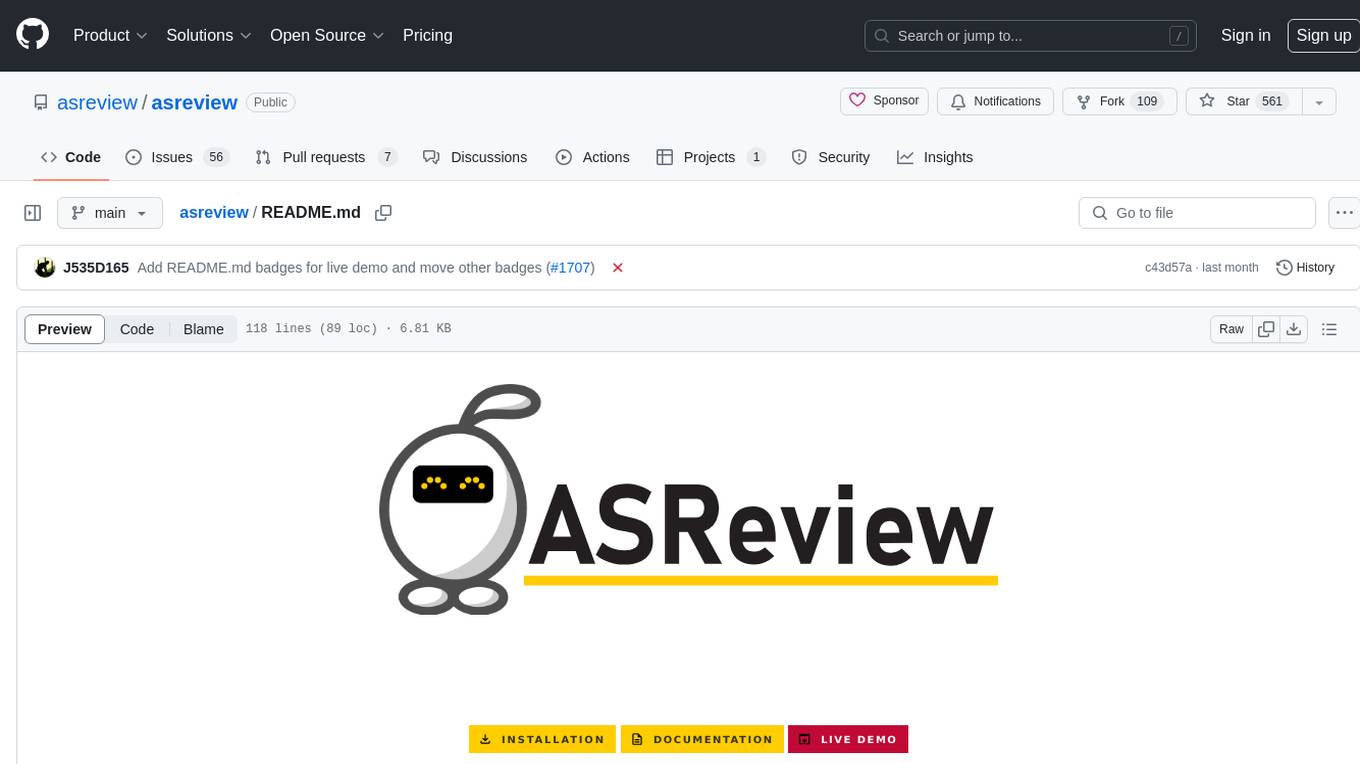
asreview
The ASReview project implements active learning for systematic reviews, utilizing AI-aided pipelines to assist in finding relevant texts for search tasks. It accelerates the screening of textual data with minimal human input, saving time and increasing output quality. The software offers three modes: Oracle for interactive screening, Exploration for teaching purposes, and Simulation for evaluating active learning models. ASReview LAB is designed to support decision-making in any discipline or industry by improving efficiency and transparency in screening large amounts of textual data.
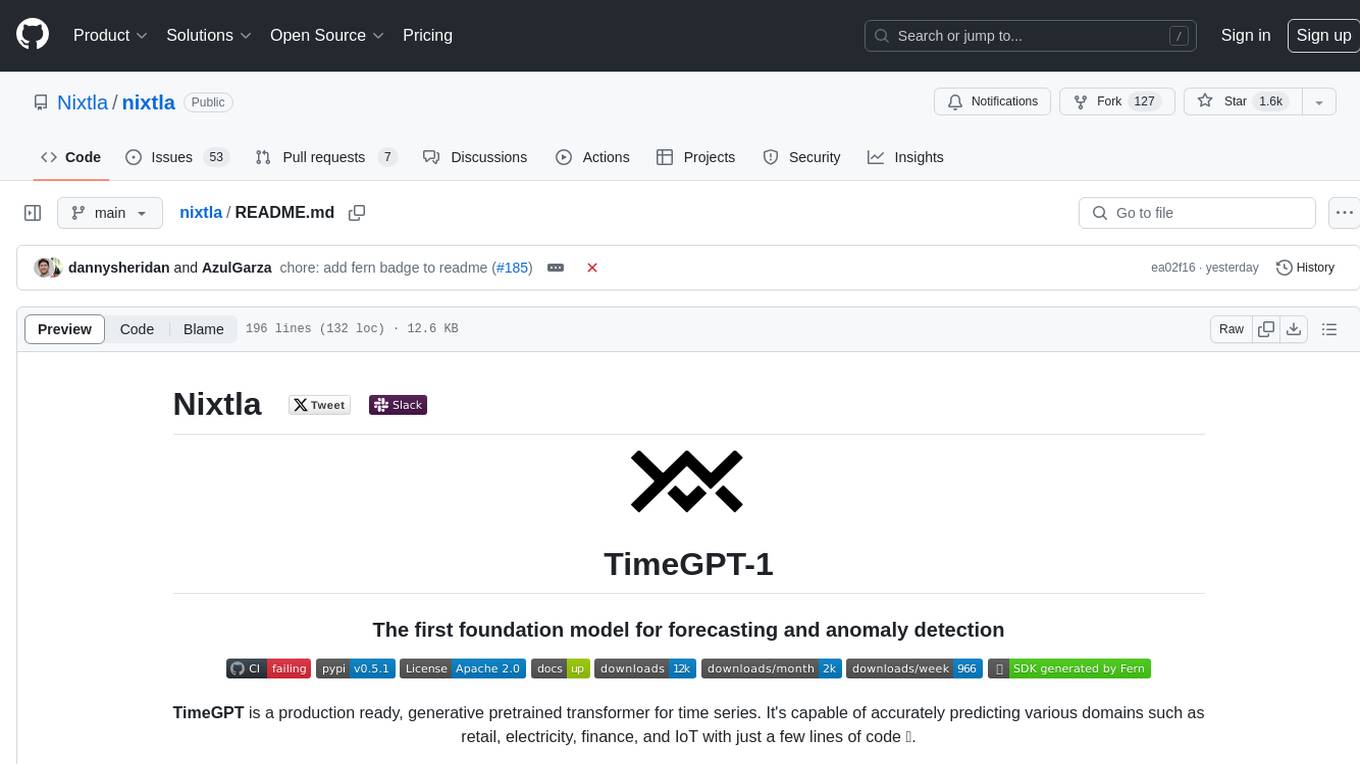
nixtla
Nixtla is a production-ready generative pretrained transformer for time series forecasting and anomaly detection. It can accurately predict various domains such as retail, electricity, finance, and IoT with just a few lines of code. TimeGPT introduces a paradigm shift with its standout performance, efficiency, and simplicity, making it accessible even to users with minimal coding experience. The model is based on self-attention and is independently trained on a vast time series dataset to minimize forecasting error. It offers features like zero-shot inference, fine-tuning, API access, adding exogenous variables, multiple series forecasting, custom loss function, cross-validation, prediction intervals, and handling irregular timestamps.
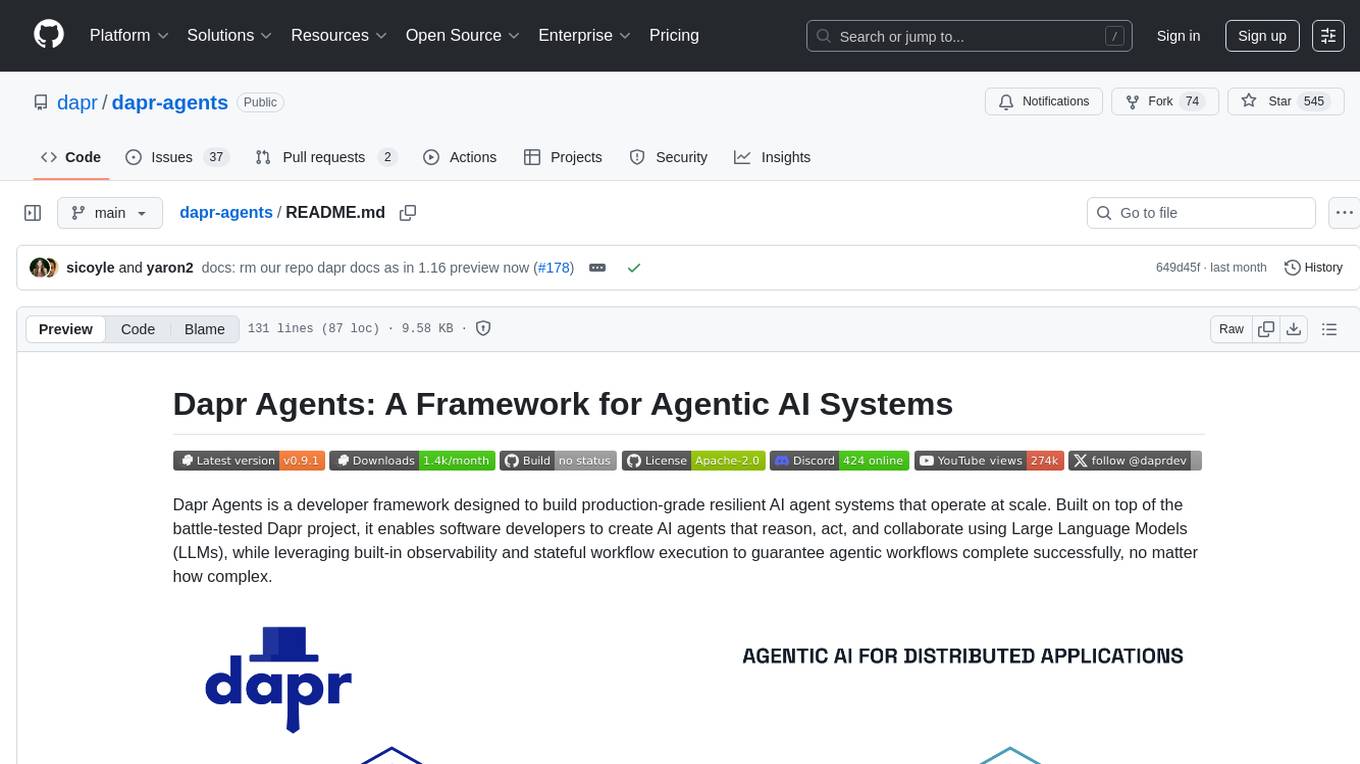
dapr-agents
Dapr Agents is a developer framework for building production-grade resilient AI agent systems that operate at scale. It enables software developers to create AI agents that reason, act, and collaborate using Large Language Models (LLMs), while providing built-in observability and stateful workflow execution to ensure agentic workflows complete successfully. The framework is scalable, efficient, Kubernetes-native, data-driven, secure, observable, vendor-neutral, and open source. It offers features like scalable workflows, cost-effective AI adoption, data-centric AI agents, accelerated development, integrated security and reliability, built-in messaging and state infrastructure, and vendor-neutral and open source support. Dapr Agents is designed to simplify the development of AI applications and workflows by providing a comprehensive API surface and seamless integration with various data sources and services.
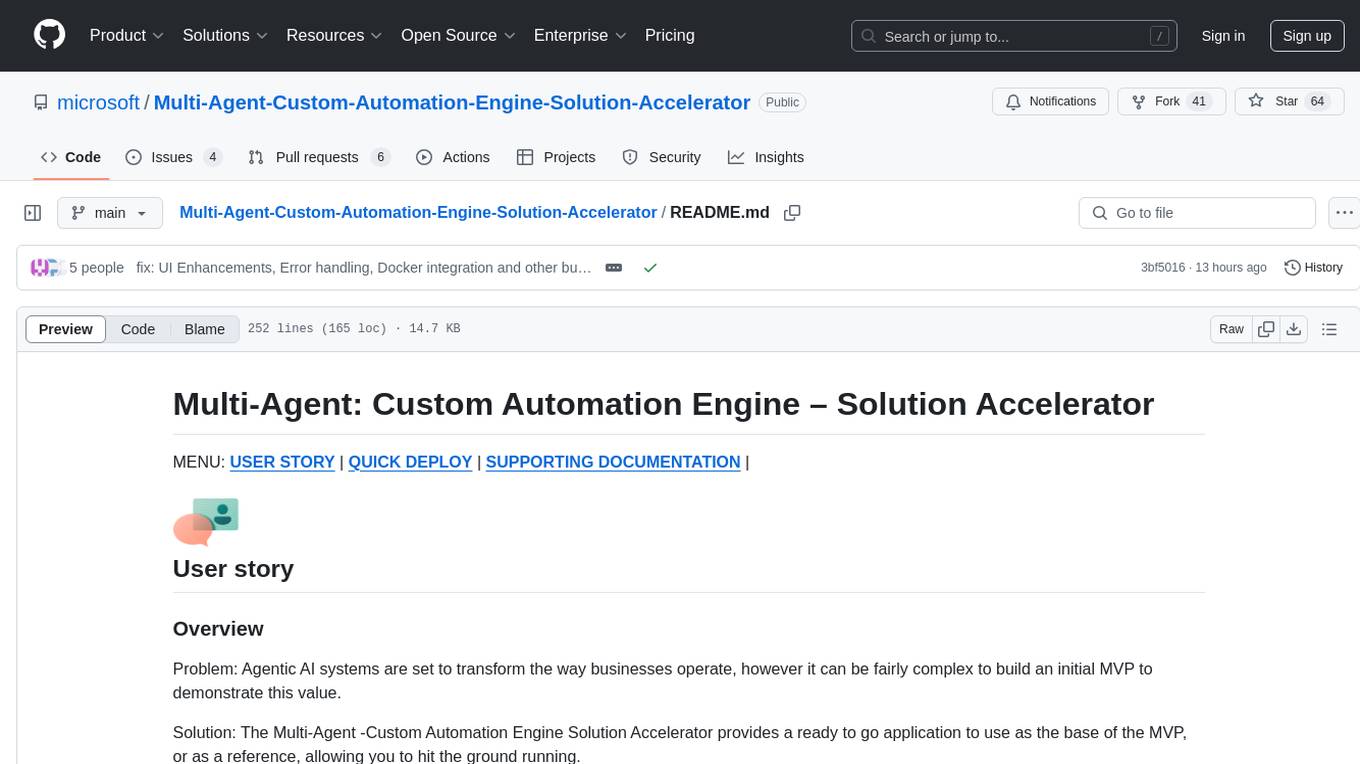
Multi-Agent-Custom-Automation-Engine-Solution-Accelerator
The Multi-Agent -Custom Automation Engine Solution Accelerator is an AI-driven orchestration system that manages a group of AI agents to accomplish tasks based on user input. It uses a FastAPI backend to handle HTTP requests, processes them through various specialized agents, and stores stateful information using Azure Cosmos DB. The system allows users to focus on what matters by coordinating activities across an organization, enabling GenAI to scale, and is applicable to most industries. It is intended for developing and deploying custom AI solutions for specific customers, providing a foundation to accelerate building out multi-agent systems.
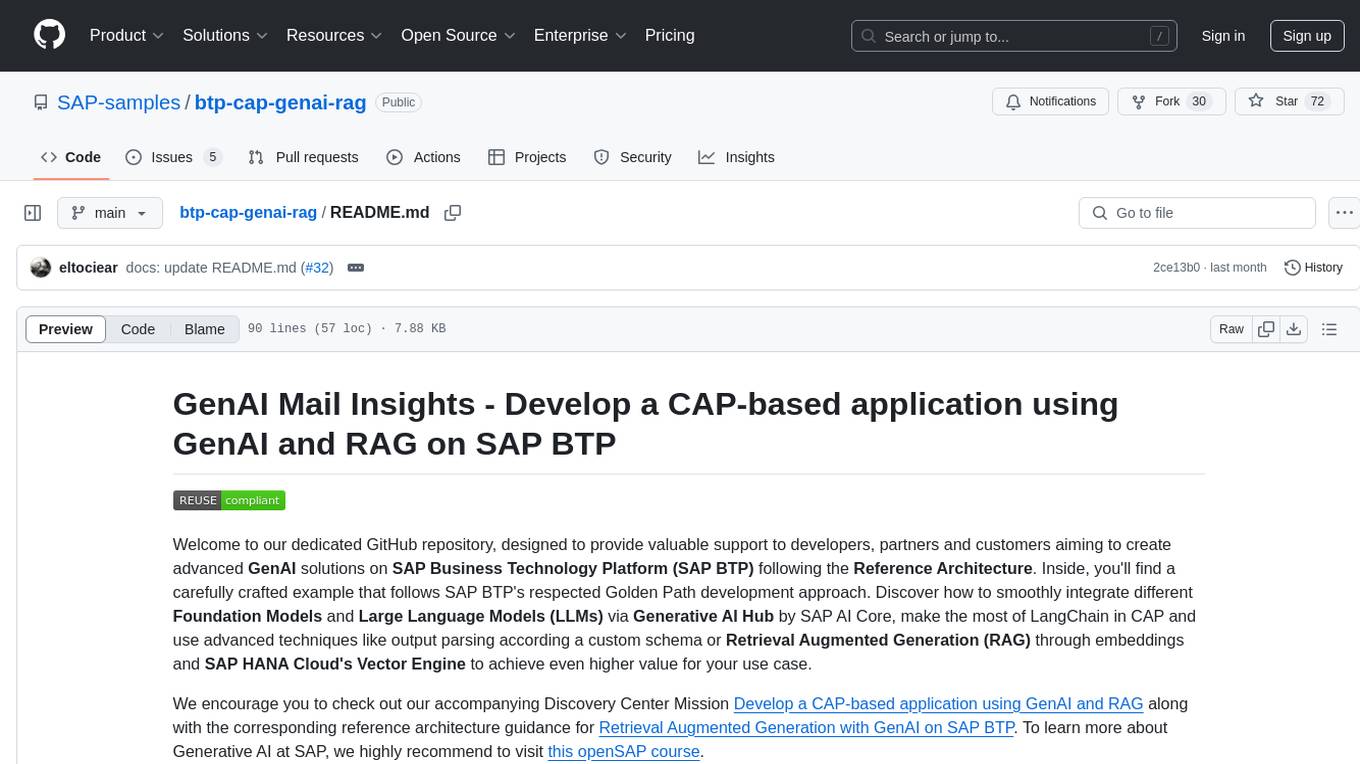
btp-cap-genai-rag
This GitHub repository provides support for developers, partners, and customers to create advanced GenAI solutions on SAP Business Technology Platform (SAP BTP) following the Reference Architecture. It includes examples on integrating Foundation Models and Large Language Models via Generative AI Hub, using LangChain in CAP, and implementing advanced techniques like Retrieval Augmented Generation (RAG) through embeddings and SAP HANA Cloud's Vector Engine for enhanced value in customer support scenarios.
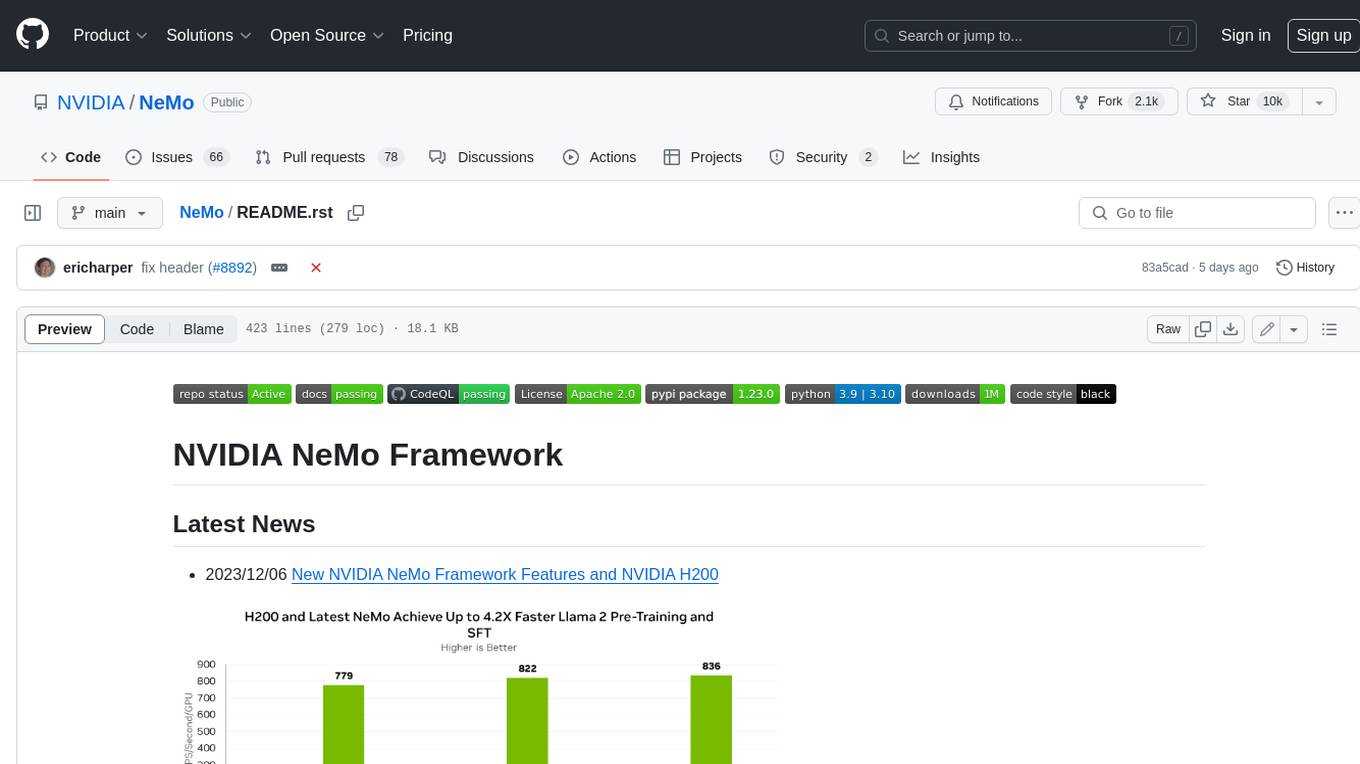
NeMo
NeMo Framework is a generative AI framework built for researchers and pytorch developers working on large language models (LLMs), multimodal models (MM), automatic speech recognition (ASR), and text-to-speech synthesis (TTS). The primary objective of NeMo is to provide a scalable framework for researchers and developers from industry and academia to more easily implement and design new generative AI models by being able to leverage existing code and pretrained models.
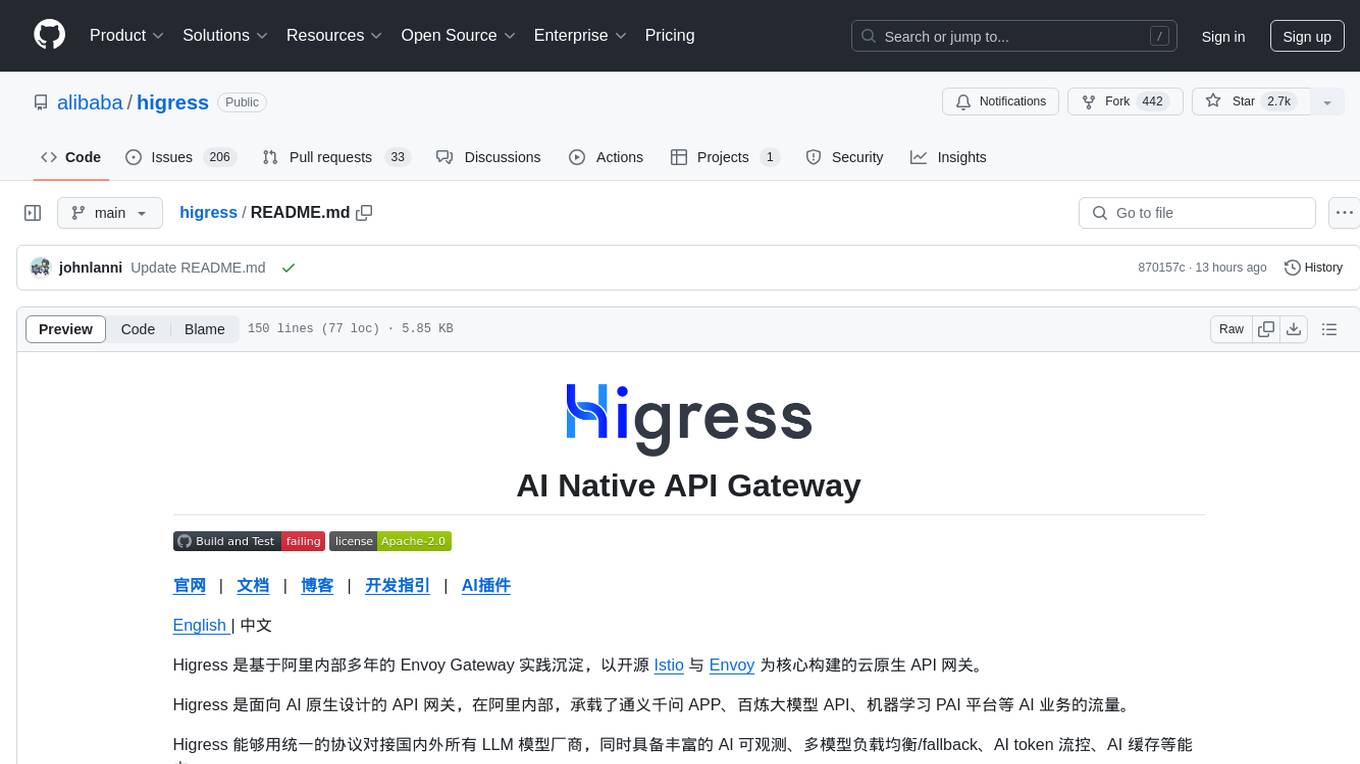
higress
Higress is an open-source cloud-native API gateway built on the core of Istio and Envoy, based on Alibaba's internal practice of Envoy Gateway. It is designed for AI-native API gateway, serving AI businesses such as Tongyi Qianwen APP, Bailian Big Model API, and Machine Learning PAI platform. Higress provides capabilities to interface with LLM model vendors, AI observability, multi-model load balancing/fallback, AI token flow control, and AI caching. It offers features for AI gateway, Kubernetes Ingress gateway, microservices gateway, and security protection gateway, with advantages in production-level scalability, stream processing, extensibility, and ease of use.
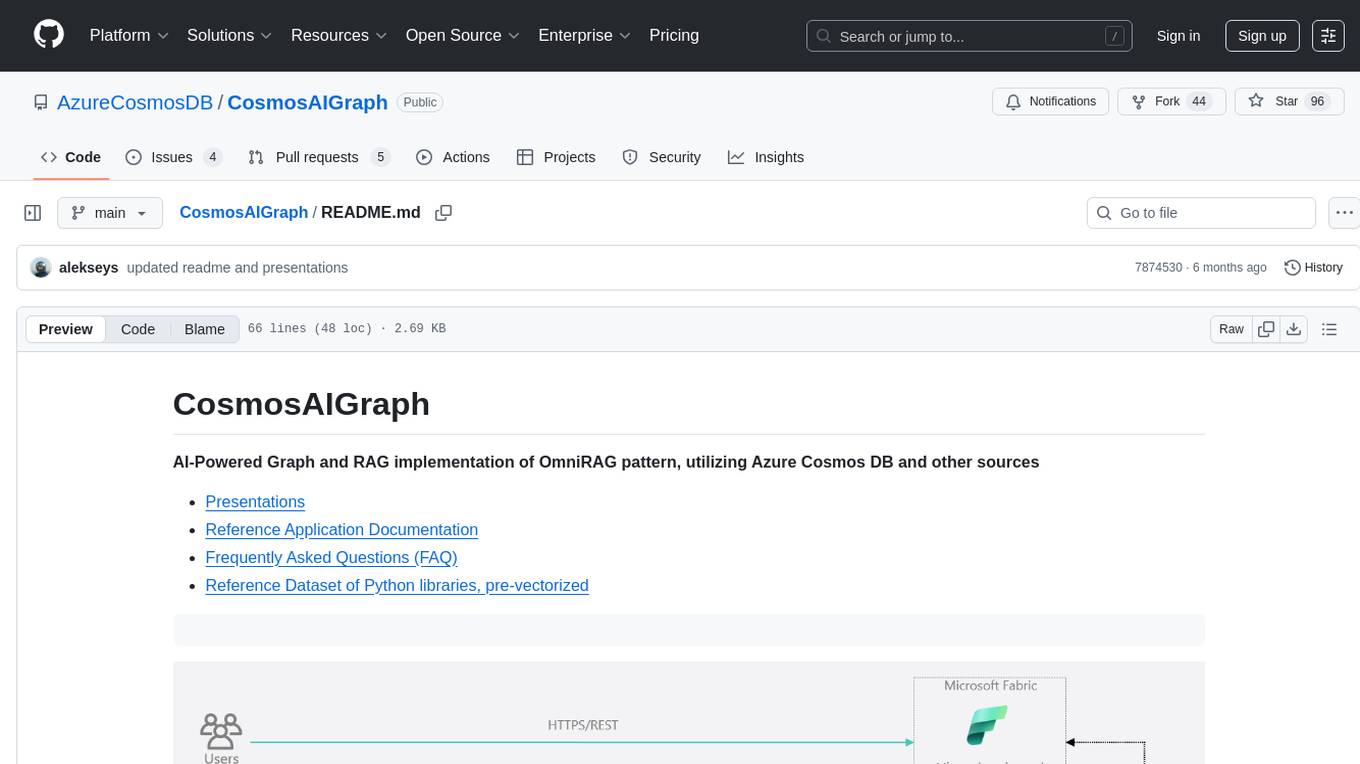
CosmosAIGraph
CosmosAIGraph is an AI-powered graph and RAG implementation of OmniRAG pattern, utilizing Azure Cosmos DB and other sources. It includes presentations, reference application documentation, FAQs, and a reference dataset of Python libraries pre-vectorized. The project focuses on Azure Cosmos DB for NoSQL and Apache Jena implementation for the in-memory RDF graph. It provides DockerHub images, with plans to add RBAC and Microsoft Entra ID/AAD authentication support, update AI model to gpt-4.5, and offer generic graph examples with a graph generation solution.
For similar tasks

Equivariant-Encryption-for-AI
At Nesa, privacy is a critical objective. Equivariant Encryption (EE) is a solution developed to perform inference on neural networks without exposing input and output data. EE integrates specialized transformations for neural networks, maintaining data privacy while ensuring inference operates correctly on encrypted inputs. It provides the same latency as plaintext inference with no slowdowns and offers strong security guarantees. EE avoids the computational costs of traditional Homomorphic Encryption (HE) by preserving non-linear neural functions. The tool is designed for modern neural architectures, ensuring accuracy, scalability, and compatibility with existing pipelines.
For similar jobs
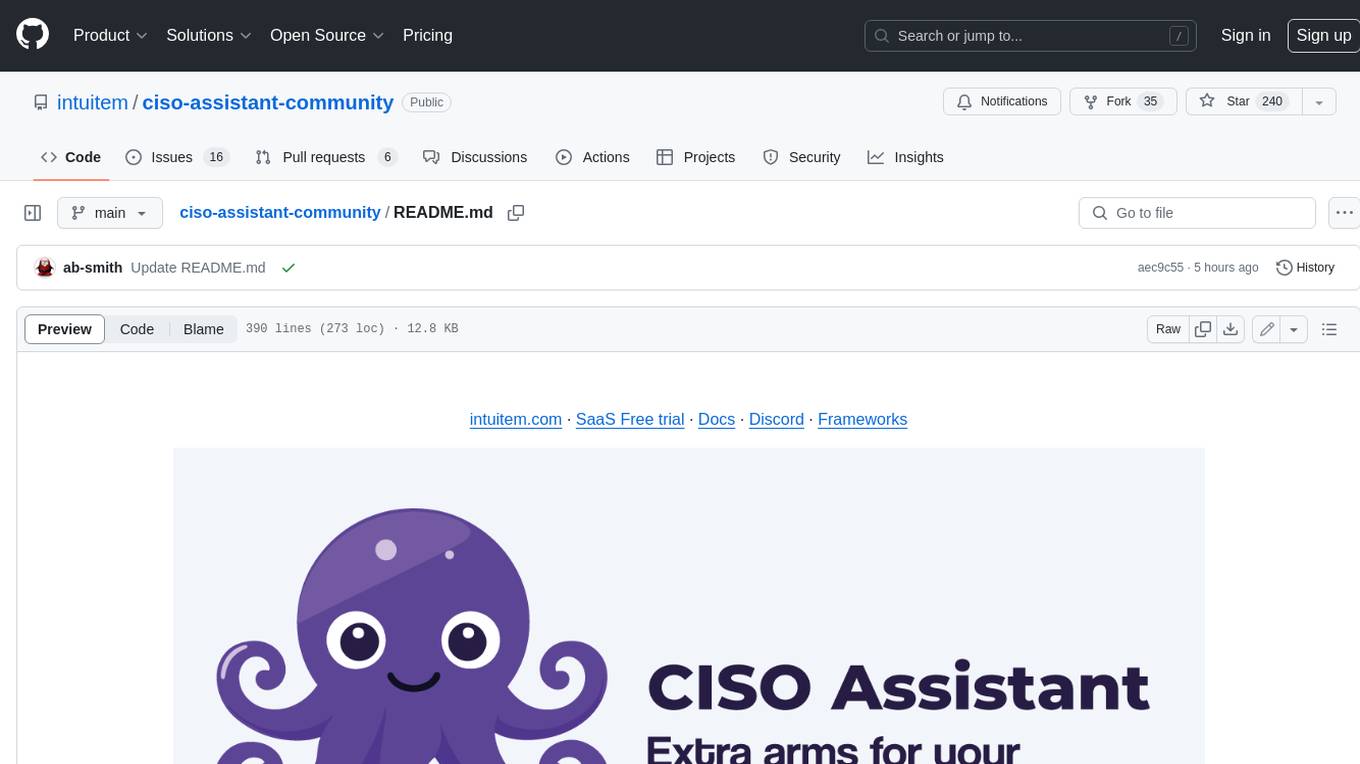
ciso-assistant-community
CISO Assistant is a tool that helps organizations manage their cybersecurity posture and compliance. It provides a centralized platform for managing security controls, threats, and risks. CISO Assistant also includes a library of pre-built frameworks and tools to help organizations quickly and easily implement best practices.
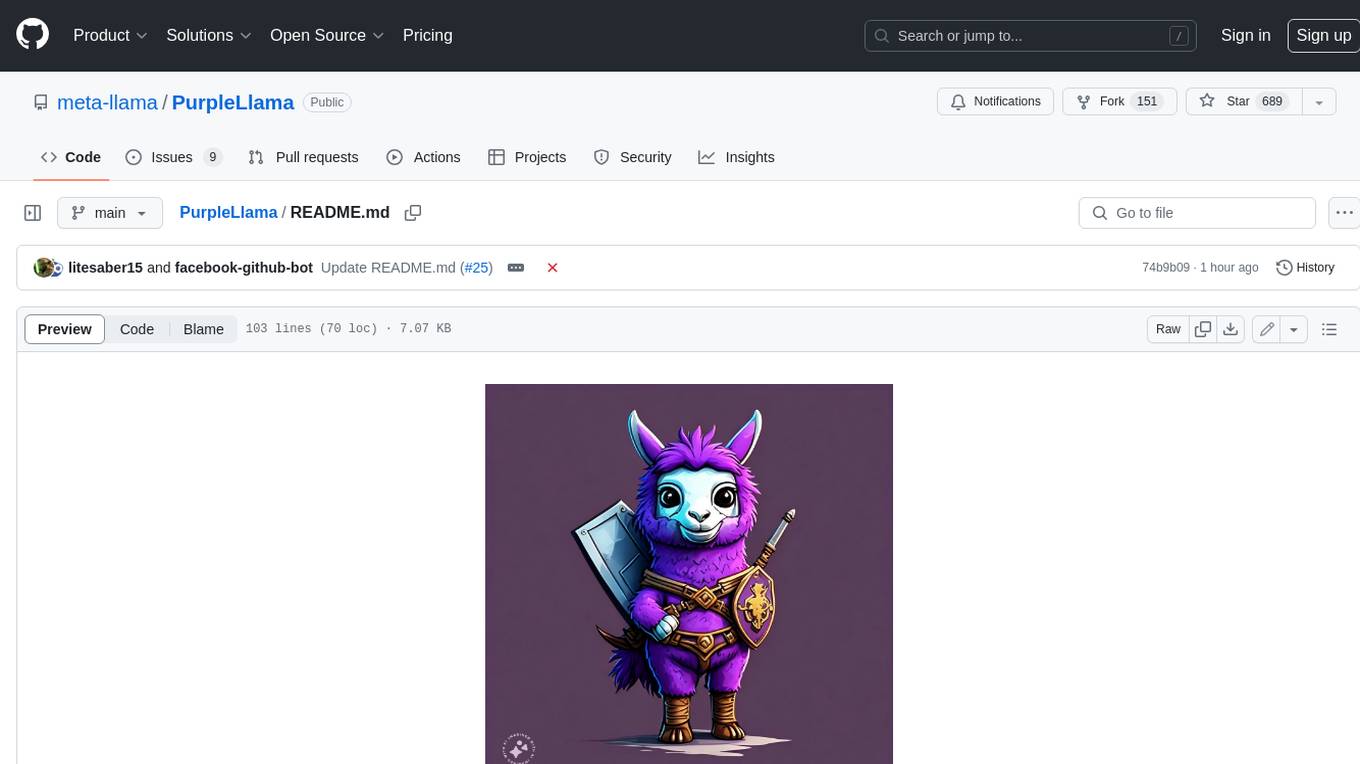
PurpleLlama
Purple Llama is an umbrella project that aims to provide tools and evaluations to support responsible development and usage of generative AI models. It encompasses components for cybersecurity and input/output safeguards, with plans to expand in the future. The project emphasizes a collaborative approach, borrowing the concept of purple teaming from cybersecurity, to address potential risks and challenges posed by generative AI. Components within Purple Llama are licensed permissively to foster community collaboration and standardize the development of trust and safety tools for generative AI.
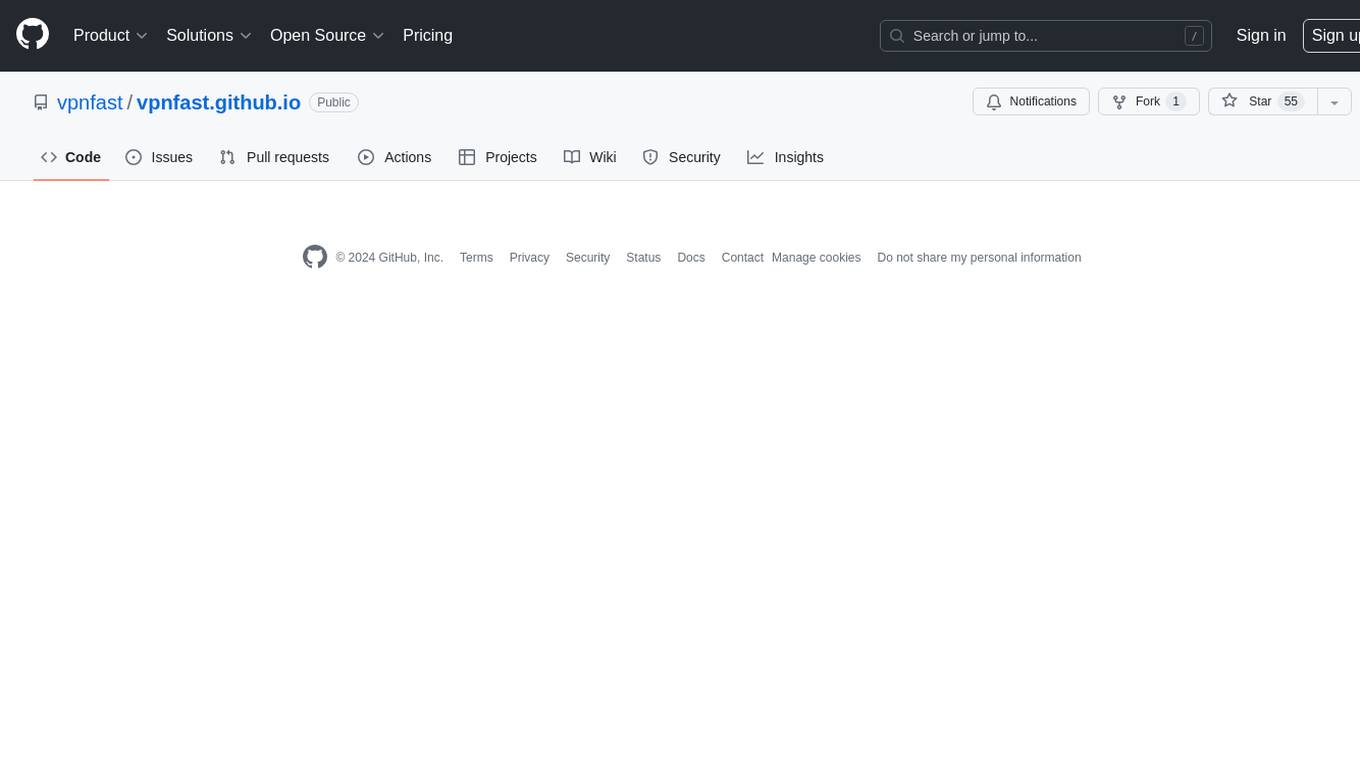
vpnfast.github.io
VPNFast is a lightweight and fast VPN service provider that offers secure and private internet access. With VPNFast, users can protect their online privacy, bypass geo-restrictions, and secure their internet connection from hackers and snoopers. The service provides high-speed servers in multiple locations worldwide, ensuring a reliable and seamless VPN experience for users. VPNFast is easy to use, with a user-friendly interface and simple setup process. Whether you're browsing the web, streaming content, or accessing sensitive information, VPNFast helps you stay safe and anonymous online.
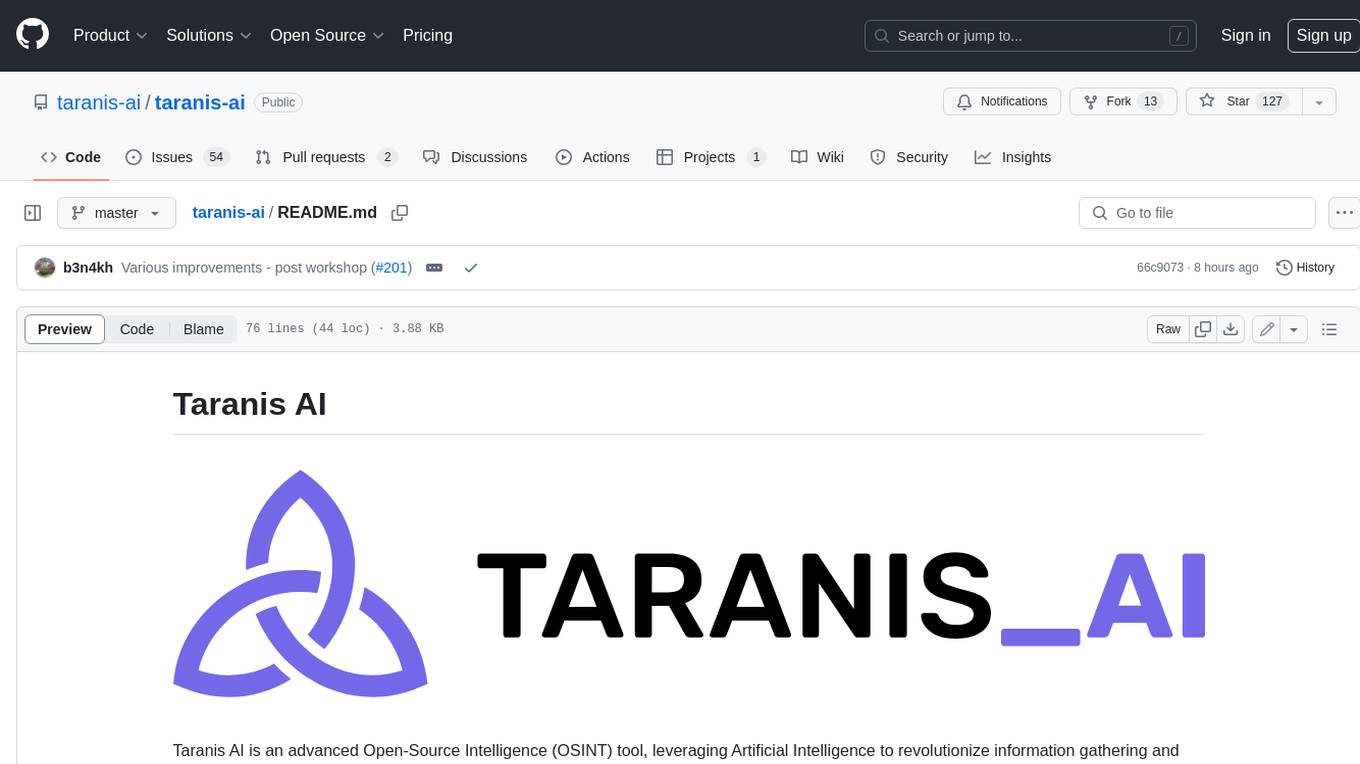
taranis-ai
Taranis AI is an advanced Open-Source Intelligence (OSINT) tool that leverages Artificial Intelligence to revolutionize information gathering and situational analysis. It navigates through diverse data sources like websites to collect unstructured news articles, utilizing Natural Language Processing and Artificial Intelligence to enhance content quality. Analysts then refine these AI-augmented articles into structured reports that serve as the foundation for deliverables such as PDF files, which are ultimately published.
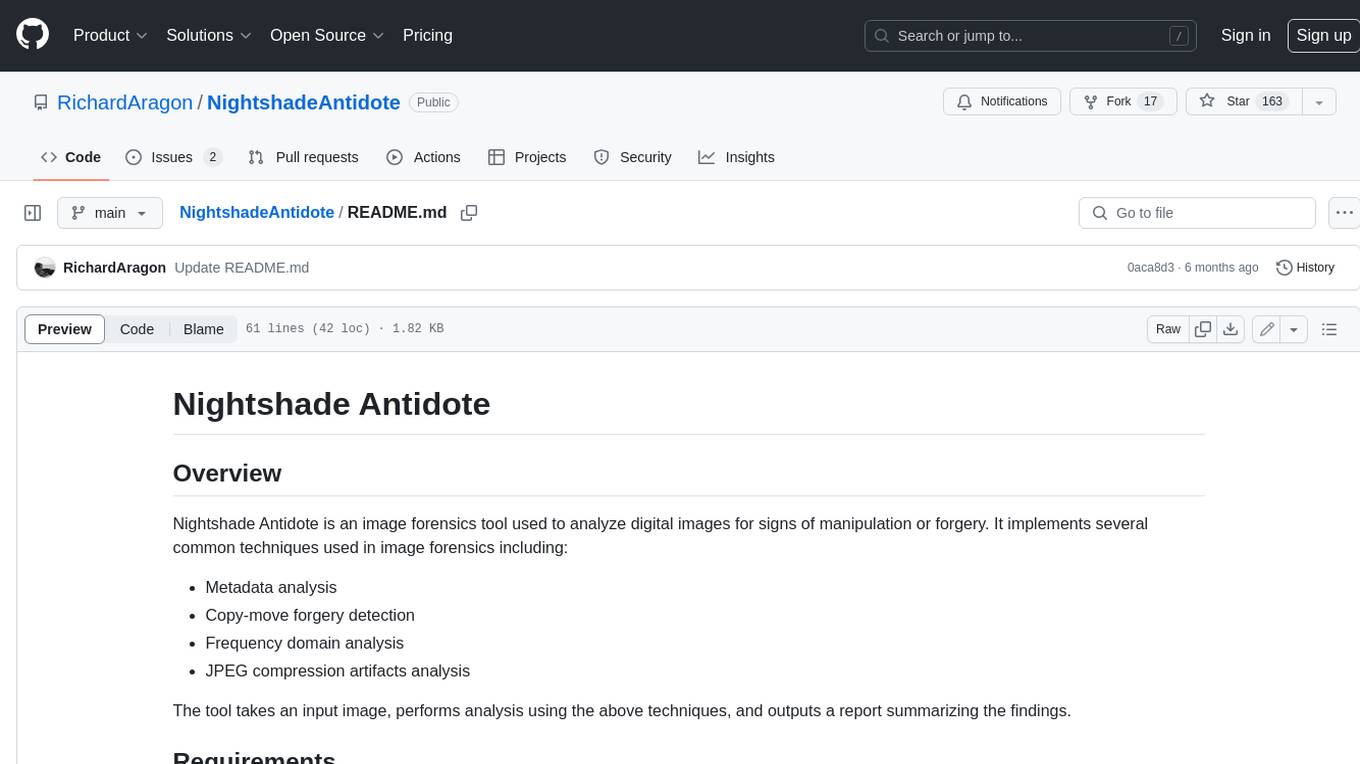
NightshadeAntidote
Nightshade Antidote is an image forensics tool used to analyze digital images for signs of manipulation or forgery. It implements several common techniques used in image forensics including metadata analysis, copy-move forgery detection, frequency domain analysis, and JPEG compression artifacts analysis. The tool takes an input image, performs analysis using the above techniques, and outputs a report summarizing the findings.
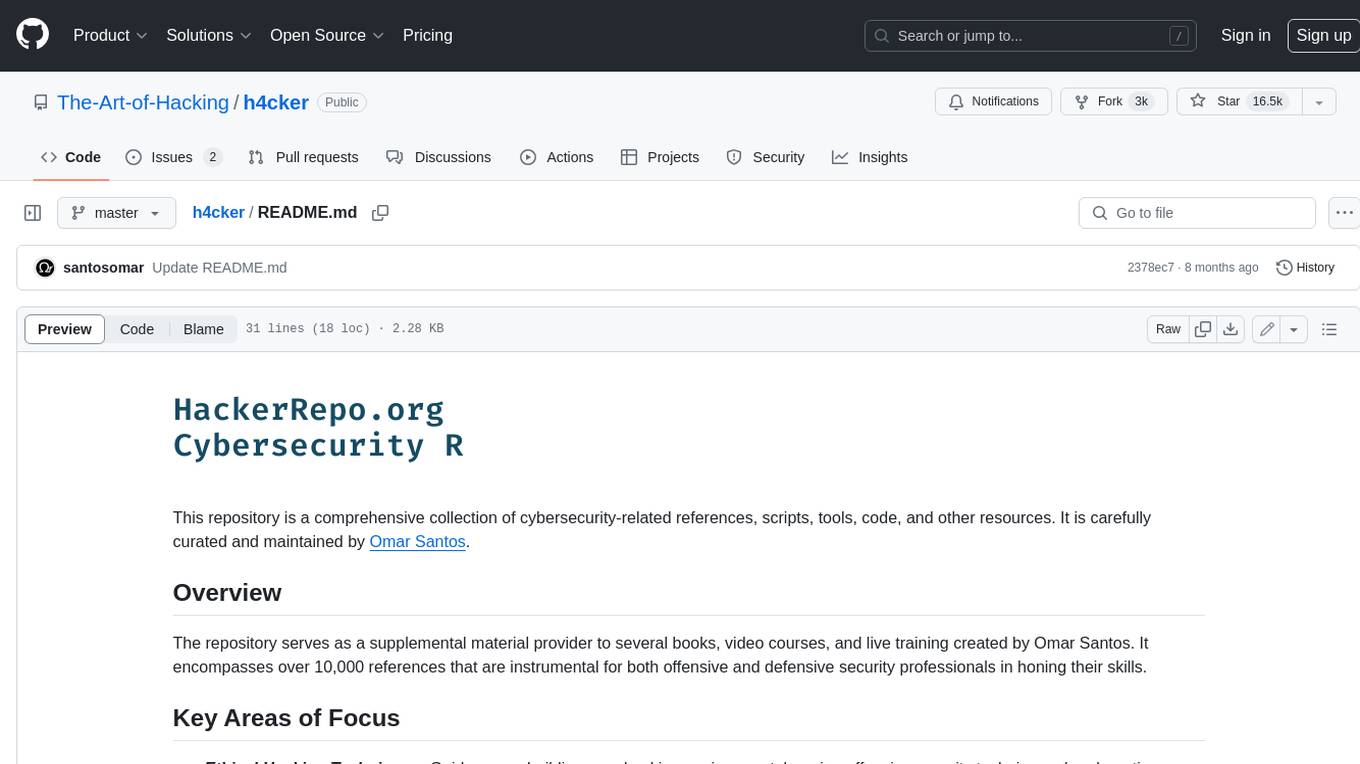
h4cker
This repository is a comprehensive collection of cybersecurity-related references, scripts, tools, code, and other resources. It is carefully curated and maintained by Omar Santos. The repository serves as a supplemental material provider to several books, video courses, and live training created by Omar Santos. It encompasses over 10,000 references that are instrumental for both offensive and defensive security professionals in honing their skills.
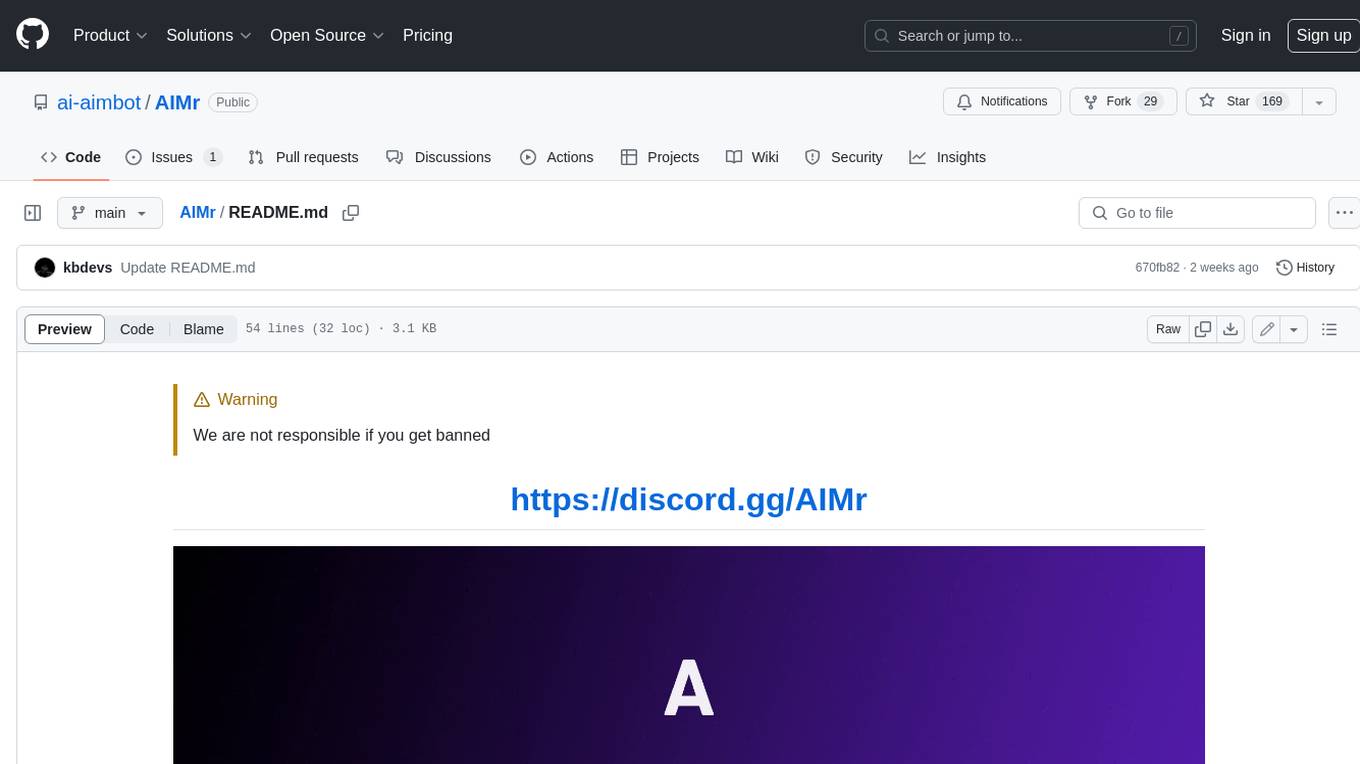
AIMr
AIMr is an AI aimbot tool written in Python that leverages modern technologies to achieve an undetected system with a pleasing appearance. It works on any game that uses human-shaped models. To optimize its performance, users should build OpenCV with CUDA. For Valorant, additional perks in the Discord and an Arduino Leonardo R3 are required.
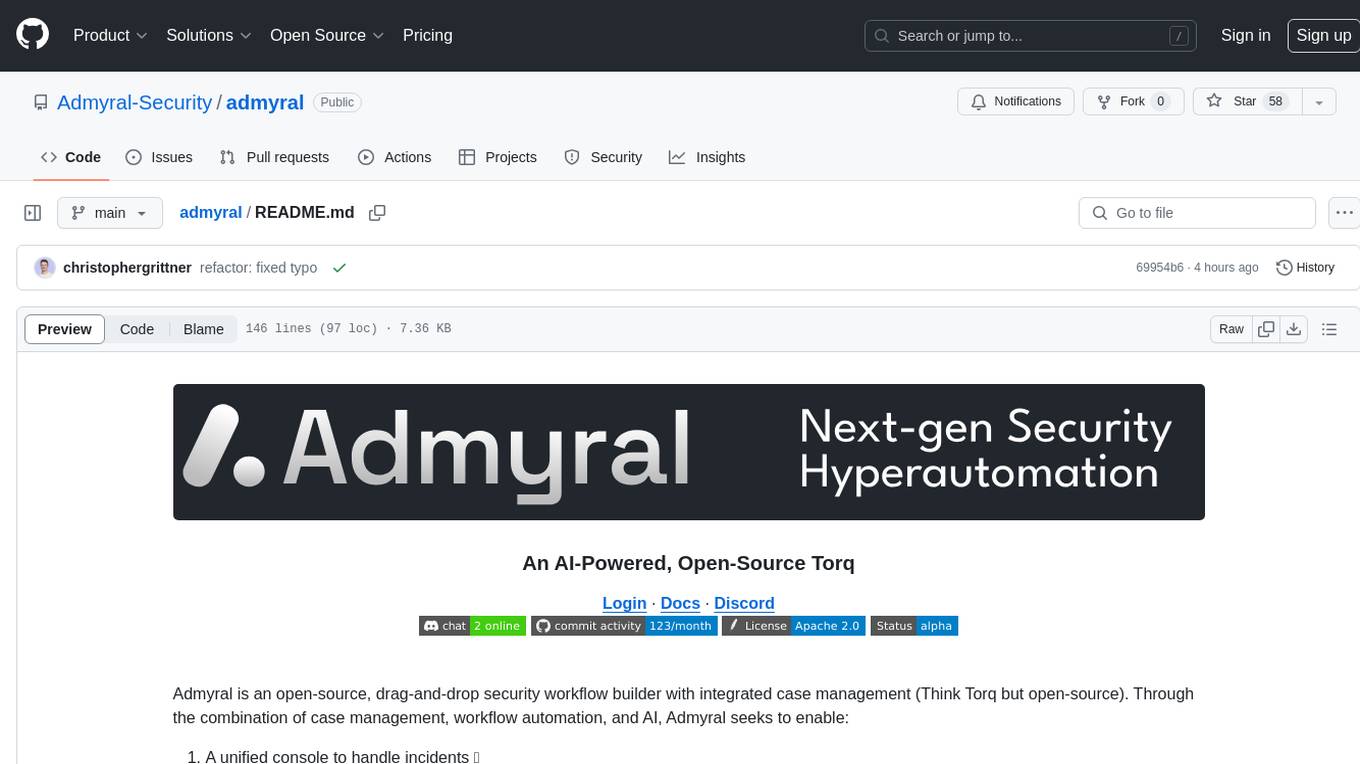
admyral
Admyral is an open-source Cybersecurity Automation & Investigation Assistant that provides a unified console for investigations and incident handling, workflow automation creation, automatic alert investigation, and next step suggestions for analysts. It aims to tackle alert fatigue and automate security workflows effectively by offering features like workflow actions, AI actions, case management, alert handling, and more. Admyral combines security automation and case management to streamline incident response processes and improve overall security posture. The tool is open-source, transparent, and community-driven, allowing users to self-host, contribute, and collaborate on integrations and features.








